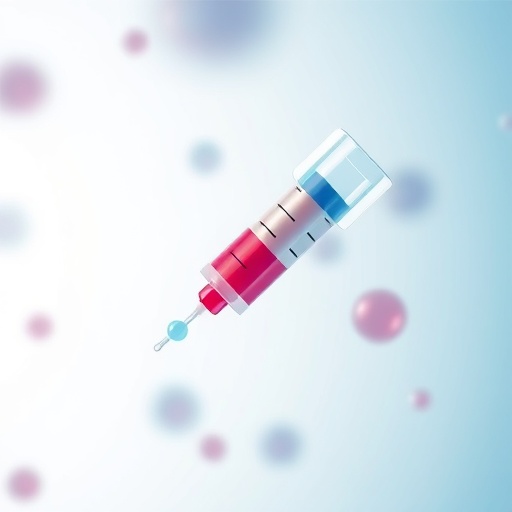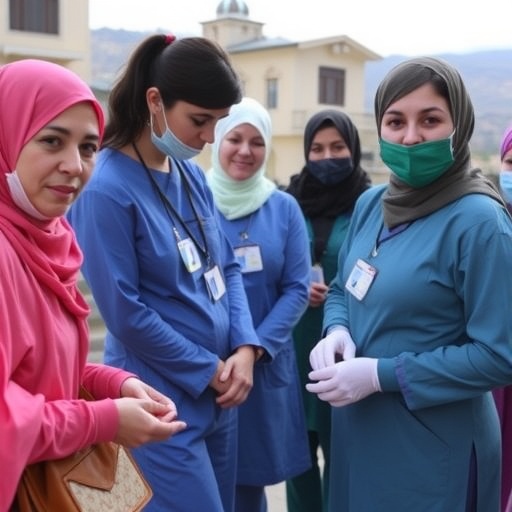In a groundbreaking advancement poised to reshape neonatal care, a new study published in the Journal of Perinatology challenges long-standing medical protocols regarding platelet transfusions in preterm infants. Authors Paul, Pearlman, and Patel critically examine the feasibility and safety of implementing a lower platelet transfusion threshold, a move that could significantly reduce unnecessary transfusions while maintaining clinical efficacy. This research not only interrogates prevalent clinical dogma but also provides a robust framework for evidence-based practice transformation in neonatology.
Platelet transfusions, historically considered essential to prevent bleeding complications in neonates, particularly those born prematurely, have been guided by arbitrary thresholds often extrapolated from adult data. These thresholds mandated transfusions when platelet counts fell below specific limits, typically set conservatively to avoid hemorrhagic risks. However, recent insights into platelet physiology and neonatal hemostasis suggest that these thresholds might be excessively high, leading to superfluous transfusions fraught with their own risks.
One of the central tenets of the new research is redefining the platelet count threshold that necessitates transfusion. The study synthesizes data from large-scale clinical trials and cohort studies demonstrating that lower thresholds do not compromise platelet function or increase bleeding risk in fragile neonates. This paradigm shift stems from a nuanced understanding of neonatal platelet biology, wherein immature platelets display a hyperfunctional character distinct from adults, thereby potentially mitigating bleeding risks even at comparatively lower counts.
The implications of adopting a lower platelet transfusion threshold extend beyond clinical efficacy. First, it markedly decreases exposure to transfusion-related complications, including alloimmunization, transfusion reactions, and infection transmission. Neonates, with their underdeveloped immune systems, are particularly vulnerable to these complications, which can exacerbate morbidity and prolong hospital stays. By judiciously limiting transfusions to cases of absolute necessity, clinicians can enhance patient safety and optimize resource utilization.
Moreover, the economic impact of revising transfusion thresholds cannot be overstated. Blood products are expensive and limited resources worldwide; reducing transfusions aligns with sustainable healthcare practices. Fewer transfusions translate into less strain on blood banks, cost savings for healthcare institutions, and allocation of resources toward other critical interventions in neonatal intensive care units (NICUs). These resource allocations can be particularly transformative in under-resourced settings where blood supply limitations are acute.
The authors meticulously outline how evidence-based guidelines can transition into clinical workflows. They emphasize multidisciplinary collaborations involving neonatologists, hematologists, and transfusion medicine specialists to establish standardized protocols within hospital systems. Education on the updated thresholds and ongoing audits are advocated to ensure adherence and to monitor patient outcomes continuously. Such implementation science approaches are essential to bridge the gap from evidence generation to bedside innovation.
Integral to this discourse is the rigorous assessment of bleeding outcomes associated with lower thresholds. The study highlights the use of advanced hemostatic monitoring tools to track platelet function rather than relying solely on numeric platelet counts. These technologies provide a more precise picture of coagulation status, enabling tailored transfusion decisions that reflect physiological realities instead of rigid laboratory cutoffs. This precision medicine approach epitomizes modern neonatal care’s direction.
Beyond individual patient outcomes, the broader epidemiological benefits are apparent. Hospitals nationwide could see reductions in transfusion-related adverse events and complications such as retinopathy of prematurity, intraventricular hemorrhage, and necrotizing enterocolitis, conditions often exacerbated by transfusion-related immunomodulation. Consequently, lowered transfusion thresholds may indirectly improve long-term neurodevelopmental outcomes for preterm infants.
Importantly, this study’s findings ignite critical discussions about the philosophy underpinning transfusion medicine in neonatology. For decades, practice has been influenced by a cautious “better safe than sorry” ethos, often favoring intervention over observation. However, the authors argue for recalibrating this mindset toward a more tolerogenic approach, balancing risks and benefits with rigorous evidence to minimize harm. This shift reflects a maturity in neonatal medicine, embracing complexity rather than defaulting to overly simplistic metrics.
The research team also addresses barriers to adoption, such as clinician hesitancy driven by long-standing habits and medico-legal concerns. To counter this, they advocate for education campaigns and dissemination of robust clinical data to build confidence in the safety and efficacy of the new thresholds. Institutional support, combined with leadership endorsement, is emphasized as critical in fostering change-resistant environments.
Furthermore, Paul, Pearlman, and Patel acknowledge the potential need for individualized transfusion strategies. While lower thresholds may be broadly applicable, certain subgroups—such as those with congenital anomalies or active bleeding—may still necessitate individualized higher thresholds. Future research directions include developing risk stratification tools incorporating genetic, biochemical, and clinical markers to guide personalized transfusion therapy in neonates.
Technological advances also promise to complement these clinical insights. Innovations in point-of-care platelet function testing and real-time coagulation assays expand the neonatal care toolkit. Paired with machine learning algorithms, these tools can predict bleeding risks more accurately, facilitating dynamic, data-driven decisions that adapt to each neonate’s evolving clinical status.
The translational nature of this research—from laboratory to clinical application—epitomizes contemporary medical science’s commitment to evidence-based care. By challenging entrenched protocols with data-backed alternatives, it exemplifies how rigorous inquiry can dismantle dogma and improve patient outcomes. This research is expected to catalyze a cascade of similar reevaluations across other domains of neonatal and pediatric care.
In conclusion, lowering the platelet transfusion threshold in neonates represents a calculated shift towards minimizing interventions while maximizing safety. It underscores the evolving understanding of neonatal physiology and the imperative to continuously refine medical guidelines in light of emerging evidence. The study by Paul, Pearlman, and Patel heralds a new chapter in neonatal transfusion medicine, one grounded in precision, prudence, and patient-centered care, promising better health trajectories for the most vulnerable patients.
The publishing of this research has already sparked widespread debate and excitement in both academic and clinical arenas. As hospitals begin to pilot protocols reflecting these findings, the neonatal community watches keenly to validate these promising outcomes in real-world settings. Should these efforts succeed, the resulting paradigm shift will not only enhance neonatal care globally but also pave the way for future innovations in transfusion medicine.
As science relentlessly advances, studies like this propel us toward more refined, compassionate, and efficient healthcare, where interventions are meticulously tailored, safeguarding fragile lives while conserving precious resources. The transition to lower platelet transfusion thresholds exemplifies how thoughtful reevaluation of clinical norms can achieve transformative impacts in medicine.
Subject of Research: Neonatal platelet transfusion thresholds and clinical implementation of lower transfusion triggers.
Article Title: Using a lower platelet transfusion threshold: translating evidence into practice.
Article References:
Paul, D.A., Pearlman, S.A. & Patel, R.M. Using a lower platelet transfusion threshold: translating evidence into practice. J Perinatol (2025). https://doi.org/10.1038/s41372-025-02444-5
Image Credits: AI Generated
DOI: https://doi.org/10.1038/s41372-025-02444-5
Tags: clinical guidelines for platelet transfusionsevidence-based practice in neonatologylower platelet transfusion thresholdneonatal bleeding complicationsneonatal platelet transfusionsplatelet physiology in neonatespreterm infant transfusion protocolsreducing unnecessary medical interventionsresearch on transfusion thresholdsrisk-benefit analysis of transfusionssafe transfusion practices in vulnerable populationstransforming neonatal care practices





